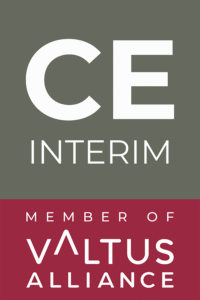Nincs elég ideje elolvasni a teljes cikket? Hallgassa meg az összefoglalót 2 percben.
A gazdasági recessziók elkerülhetetlenek, de az ilyen visszaesések során bekövetkező üzleti kudarcoknak nem kell bekövetkezniük. Minden recessziónak vannak nyertesei és vesztesei - míg egyes vállalkozások a létfenntartásért küzdenek, addig mások virágoznak, sőt, még terjeszkednek is. Mi a különbség? Azok, akik túlélnek, jellemzően a következőkre támaszkodnak recesszióálló üzleti modellek-modellek, amelyeket úgy terveztek, hogy kezelni tudják a pénzügyi stresszt, alkalmazkodni tudjanak a változó körülményekhez, és megerősödve kerüljenek ki belőle.
Ebben a cikkben feltárjuk a recesszióálló üzleti modellek alapjait, elmerülünk a valós példákban, és megvalósítható stratégiákat kínálunk a gazdasági viharok ellenálló képességű vállalkozások létrehozásához.
Mi határozza meg a recesszióálló üzleti modellt?
Amikor a vállalkozások recesszióval néznek szembe, a túlélés meghatározó tényezője nem csupán a pénzügyi erő, hanem a mögöttes üzleti modell. A rugalmas, alkalmazkodóképes vállalkozások akkor is virágoznak és folytatják a bevételszerzést, amikor a hagyományos vállalkozások a fogyasztói kiadások visszaesésével küzdenek.
Az alábbiakban bemutatjuk, hogy mi határozza meg recesszióálló üzleti modellek elkülönül a többitől:
1. Ismétlődő és kiszámítható bevételi források
A recesszióálló vállalkozások egyik legfontosabb jellemzője, hogy rendelkeznek kiszámítható, stabil bevétel. Ez jellemzően azt jelenti, hogy olyan modellekre összpontosítunk, amelyek visszatérő bevételt generálnak. A előfizetés alapú üzleti modell kiváló példa erre. Ahelyett, hogy az egyszeri értékesítésre támaszkodnának, az előfizetéses szolgáltatásokkal rendelkező cégek a következőkre támaszkodhatnak állandó, havi bevétel ami elszigeteli őket a hirtelen keresletcsökkenéstől.
Vegye a Spotify vagy Netflixpéldául. A fogyasztók még recesszió idején is előfizetnek ezekre a szolgáltatásokra, mert a költségekhez képest az érzékelt érték továbbra is magas marad.
A modell szépsége a stabilitásban rejlik: gazdasági visszaesés idején a fogyasztók nagyobb valószínűséggel mondják le a nagy értékű tételeket, de gyakran ragaszkodnak az általuk értékesnek tartott kisebb, ismétlődő szolgáltatásokhoz.
2. Nagy kereslet az alapanyagok iránt
Az olyan vállalkozások, amelyek a következőkre összpontosítanak alapvető fontosságú-termékek vagy szolgáltatások, amelyek nélkül az emberek nem tudnak élni - természetüknél fogva recesszióállóbbak. Élelmiszerüzletek, egészségügyi szolgáltatók, és közműszolgáltatók történelmileg jól teljesítettek a visszaesés idején. De még ha az Ön vállalkozása nem is tartozik természetes módon ezekbe a kategóriákba, akkor is lehetséges, hogy kínálatát az alapvető igények kielégítésére alakítsa át.
Például a COVID-19 világjárvány idején az olyan ágazatokban működő vállalatok, mint a házhozszállítás, egyéni védőfelszerelés, és távmunka technológia gyorsan alkalmazkodott az új fogyasztói igényekhez. Az alapvető szolgáltatások irányába történő elmozdulással olyan vállalkozások is új utakat találtak a gyarapodásra, amelyek egyébként nehézségekkel küszködtek volna.
3. Pénzügyi rugalmasság és erős likviditás
Ha van egy erős mérleg a recesszióálló vállalkozások másik alapvető jellemzője. A minimális adóssággal, bőséges készpénztartalékkal és pénzügyi rugalmasság a bevételekben bekövetkező átmeneti zavarokat drasztikus, a hosszú távú kilátásokat veszélyeztető megszorítások nélkül tudja kezelni.
Az európai vállalkozások gyakran konzervatívabban állnak hozzá a finanszírozáshoz, fenntartva a karcsúbb működés és kevesebb kötelezettség mint amerikai társaik. A túlzott hitelfelvétel elkerülése és a működési költségek alacsonyan tartása révén fenntartják a rugalmasságot, hogy a gazdasági feltételek változása esetén gyorsan tudjanak váltani.
Vegye a IKEA példaként. A svéd óriásvállalat a visszaesésekben is jól boldogul, köszönhetően költségvetés-barát modelljének, hatékony ellátási láncának és skálázható működésének.
Diverzifikáció: Kockázatok megosztása a rugalmasság kiépítése érdekében
A diverzifikáció kritikus része minden recesszióálló stratégia. A kockázat különböző bevételi forrásokra, iparágakra vagy régiókra történő elosztásával a vállalkozások elszigetelhetik magukat bármelyik terület visszaesésétől.
1. Bevételi források bővítése
Az egyetlen bevételi forrásra támaszkodó vállalat sebezhető a külső sokkhatásokkal szemben. Az egyik legjobb módja annak, hogy recesszióálló az, hogy a bevételi források bővítése. Ez magában foglalhatja új termékek, szolgáltatások nyújtását vagy különböző piaci szegmensekbe való belépést.
Amazon a bevételek diverzifikálásának példaértékű esete. Az online könyvesboltként indult, majd olyan területekre terjeszkedett, mint a felhőalapú számítástechnika (AWS), streaming (Amazon Prime) és logisztika. Ezen ágazatok mindegyike különböző gazdasági ciklusokat él át, ami lehetővé teszi az Amazon számára, hogy nyereséges maradjon még akkor is, ha a fogyasztói kiadások valamelyik ágazatban visszaesnek.
A kisebb vállalkozások számára a diverzifikáció a következők hozzáadását jelentheti kiegészítő szolgáltatások vagy a új értékesítési csatornák például digitális platformok vagy új piacok.
2. Földrajzi diverzifikáció
A több régióban való működés csökkenti az egyes országok gazdasági ciklusainak való kitettséget. Nestlépéldául, amelynek tevékenységei Európára, Ázsiára és Amerikára terjednek ki, az egyik régióban tapasztalható lassulást úgy tudja ellensúlyozni, hogy kihasználja egy másik régió növekedését.
Ez a földrajzi diverzifikáció lehetővé teszi a vállalatok számára, hogy a stabil és a feltörekvő piacokon egyaránt jelen legyenek, kiegyensúlyozva a kockázatokat.
Európában a kontinensen terjeszkedő vállalkozások profitálhatnak az EU változatos gazdasági környezetéből. Míg a nyugat-európai országokban visszaesés tapasztalható, a kelet-európai piacok gyakran kínálnak növekedési lehetőségeket. Ez a földrajzi szórás sokat számíthat a következőkben recesszióval szembeni ellenálló képesség.
3. Ügyfélszegmensek diverzifikálása
A változatos ügyfélkör kiszolgálása szintén növeli a védelmet. Azok a vállalkozások, amelyek mind a luxuspiacok és a költségvetés-tudatos fogyasztók nagyobb rugalmassággal tudnak a gazdasági visszaesés idején másra összpontosítani.
Például a 2008-as pénzügyi válság idején, diszkont kiskereskedők mint a Aldi és Lidl jelentősen nőtt a hagyományos szupermarketek helyett megfizethető alternatívákat kereső vásárlók száma.
Azáltal, hogy különböző árfekvésű termékeket vagy szolgáltatásokat kínálnak, vagy a célcsoportok megcélzásával új ügyfelek demográfiai adatai, a vállalkozások több lehetőséget teremthetnek a stabilitásra a zavaros időkben.
Digitális átalakulás: A recesszió-biztosság elengedhetetlen feltétele
Ha van egy trend, amely az elmúlt két évtizedben átalakította a vállalkozásokat, akkor az a következő. digitális átalakulás. Azok a vállalatok, amelyek felkarolták technológia- akár automatizálás, felhőalapú számítástechnika vagy adatvezérelt döntéshozatal révén - sokkal mozgékonyabbak és képesek alkalmazkodni a gazdasági visszaesés során.
Vizsgáljuk meg, hogyan használhatják a vállalkozások a digitális eszközöket a következők érdekében recesszióálló a műveleteik.
1. Műveletek automatizálása
Az automatizálás az egyik legerősebb eszközzé vált egy recesszióálló vállalkozás arzenáljában. Az ismétlődő feladatok automatizálásával - legyen szó akár a gyártásról, az ügyfélszolgálatról vagy a logisztikáról - a vállalatok jelentősen csökkenthetik a költségeket, miközben fenntartják a teljesítményt.
Az európai gyártók például már régóta élen járnak a következők bevezetésében robotizált folyamatautomatizálás (RPA) és intelligens gyárak. Ezek a fejlesztések csökkentik az emberi munkaerőre való támaszkodást a rutinfeladatoknál, csökkentik az üzemeltetési költségeket és javítják a hatékonyságot. Az esetleges gazdasági lassulással szembesülő vállalkozások számára ez a fajta működési rugalmasság felbecsülhetetlen értékű.
Amikor hirtelen működési változások vagy vezetői hiányosságok merülnek fel, a vállalatok gyakran fordulnak a CE Interim, egy interkulturális interim menedzsmentre szakosodott cég. A CE Interim hatalmas tapasztalattal rendelkezik az európai válság- és helyreállítási menedzsment terén, és a következőkkel foglalkozik azonnali vezetői megoldások, biztosítva a működési folyamatosságot és stabilitást a zavaros időkben.
2. A felhőalapú számítástechnika és a SaaS modellek kihasználása
Felhőalapú számítástechnika és Szoftver mint szolgáltatás (SaaS) modellek szerves részévé váltak azoknak a vállalkozásoknak, amelyeknek gyorsan kell növelniük vagy csökkenteniük a méretüket. A felhőszolgáltatások által biztosított rugalmasság azt jelenti, hogy a vállalatoknak nem kell drága infrastruktúrába beruházniuk - csak azért fizetnek, amit használnak, így a költségstruktúra sokkal kedvezőbbé válik. változó ahelyett, hogy rögzítettek lennének.
Például a vállalkozások, amelyek a AWS vagy Microsoft Azure zökkenőmentesen igazíthatják számítási igényeiket az igényekhez anélkül, hogy költséges tőkeberuházások miatt kellene aggódniuk. Ez a skálázhatóság nem csak a működési hatékonyságot biztosítja, hanem költséghatékonyság lassú időszakokban.
3. E-kereskedelem és digitális értékesítési csatornák
A recesszió idején az erős vállalkozások e-kereskedelmi képességek jelentős előnyben vannak. Ahogy a fogyasztói szokások az online vásárlás irányába tolódnak el, a digitális platformokba beruházó vállalatok jobb helyzetben vannak, hogy meghódítsák ezt a piacot.
Még a hagyományos tégla- és üzlethelyiségek is recesszióálló erőteljes online jelenlét kiépítésével.
A világjárvány rávilágított erre az előnyre. A kialakult e-kereskedelmi infrastruktúrával rendelkező kiskereskedők sokkal gyorsabban tudtak alkalmazkodni, mint a személyes értékesítésre támaszkodók. Ez a váltás itt marad, és a vállalkozásoknak továbbra is a digitálisan átalakítani hogy versenyképesek maradjanak.
Fenntartható üzleti modellek: Hosszú távú gondolkodás a recesszióval szembeni ellenálló képességért
A fenntarthatóság nem csak egy divatos szó, hanem egyre inkább üzleti szükségszerűséggé válik - különösen Európában, ahol a fogyasztók egyre inkább aggódnak az alábbiak miatt. környezeti hatás és társadalmi felelősségvállalás. De az etikai megfontolásokon túlmenően a fenntarthatóság gyakorlati előnyt kínál egy recesszióálló üzlet.
1. Etikus és környezetbarát üzleti modellek
Fenntartható üzleti modellek, amelyek a következőkre összpontosítanak hosszú távú értékteremtés, gyakran jobban teljesítenek másoknál a recesszió idején. Az etikus beszerzést, az alacsony környezeti terhelést és a tisztességes munkaügyi gyakorlatot előtérbe helyező vállalatok nagyobb mértékben élvezik a ügyfélhűség, még akkor is, ha a rendelkezésre álló jövedelem csökken.
Patagóniapéldául a környezetvédelmi aktivizmus és a fenntartható termékek iránti elkötelezettsége révén rendkívül rugalmas üzletet épített ki. Azzal, hogy a vásárlókat arra ösztönzi, hogy kevesebbet, de minőséget vásároljanak, a Patagonia összehangolja üzleti gyakorlatát a vásárlói értékekkel, és ezzel olyan recesszióálló márkát épít, amely jó és rossz időkben is jól prosperál.
2. A szabályozási változásokhoz való igazodás
A fenntarthatóságra összpontosító vállalkozások is jobban alkalmazkodnak a változásokhoz. szabályozási környezetek, különösen Európában, ahol a kormányok egyre inkább előírják a környezetbarátabb gyakorlatokat. Azok a vállalatok, amelyek idejekorán igazodnak ezekhez a szabályozásokhoz, kisebb valószínűséggel szembesülnek a későbbiekben zavarokkal, és nagyobb eséllyel tudnak biztosítani a fenntartható növekedésre irányuló finanszírozást vagy beruházásokat.
Példák a sikeres recesszióálló vállalkozásokra
Számos vállalat bizonyította az ágazatokon átívelő recesszióálló modellek. Ezek a vállalatok okos stratégiákat, diverzifikációt és innovációt alkalmaztak, hogy a visszaesés idején is nyereségesek maradjanak.
1. Alma: Apple: Innováció a recesszióban
Az Apple üzleti modellje a folyamatos innovációra, a prémium árképzésre és a diverzifikált bevételi forrásokra épül. Gazdasági visszaesés idején az Apple nem csökkenti árait, hanem olyan kívánatos termékek létrehozására összpontosít, amelyeket a fogyasztók recesszió ide vagy oda, a fogyasztók hajlandóak megvásárolni. Ez a stratégia, valamint a készülékek és szolgáltatások erős ökoszisztémája segít a vállalatnak fenntartani a nyereségességet még akkor is, amikor a diszkrecionális kiadások szűkülnek.
2. Costco: előfizetés és méretarány
Costco tagsági modell az előfizetési bevételeken keresztül történő recesszióbiztosítás kiváló példája. Az éves tagdíjat fizető hűséges tagok milliói révén a Costco a piaci viszonyoktól függetlenül állandó bevételt élvez. Az összpontosítása a nagybevásárlás és kedvezményes árképzés a költségtudatos fogyasztókat szólítja meg a gazdasági visszaesés idején, ami még recesszióban is segíti a növekedést.
3. Egészségügyi szolgáltatók: Rugalmatlan kereslet
Az egészségügy vitathatatlanul a leginkább recesszióálló iparág. A gazdasági körülményektől függetlenül az embereknek mindig szükségük lesz orvosi ellátásra. Telemedicina, az otthoni ápolási szolgáltatások és a gyógyszeripar különösen rugalmas ágazatok, mivel a gazdasági visszaesés idején, amikor az emberek jobban odafigyelnek az egészségükre, gyakran megnő a kereslet e szolgáltatások iránt.
Hogyan hozzunk létre egy recesszióálló üzletet?
A recesszióálló vállalkozás kialakítása nem csupán a gazdasági visszaesésre való reagálásról szól, hanem a felkészülésről is. Íme, a következő megvalósítható stratégiák biztosítsa vállalkozását a recesszió ellen:
1. Rugalmas bevételi források kiépítése
A legfontosabb lépés olyan bevételi források megteremtése, amelyek következetes és kiszámítható. Fontolja meg, hogy felajánlja előfizetési szolgáltatások, hűségprogramok létrehozása, vagy a többszintű árképzési modellek amelyek különböző ügyfélszegmenseket szólítanak meg.
2. A költségellenőrzésre összpontosítva
A költségszerkezet rugalmasságának fenntartása alapvető fontosságú. Fektessen be automatizálás és digitális eszközök az emberi munkaerőre való támaszkodás csökkentése és a hatékonyság növelése érdekében. Győződjön meg arról, hogy a költségalap lean elégséges ahhoz, hogy a rövid távú bevételcsökkenést a hosszú távú kilátások károsodása nélkül átvészelje.
A költségszerkezetük kiigazításával vagy a vezetőség gyors leváltásával szembesülő vállalatok gyakran fordulnak a CE Interim.
Több mint egy évtizedes szakértelemmel fordulatszám-kezelés és válsághelyzetből való kilábalás, A CE Interim tapasztalt ideiglenes vezetőket biztosít a vállalatok számára a kritikus átmenetek kezelésére és az üzletmenet folytonosságának fenntartására nehéz időkben.
3. Folyamatos innováció
A recesszió alatti innováció nem feltétlenül jelent radikális átalakulást, de szükség van rá. a honlap adaptálása. Hallgassa meg az ügyfelek visszajelzéseit, figyelje a piaci trendeket, és tegye fokozatos fejlesztések amelyek még a nehéz időkben is értéket nyújtanak. Azok a vállalkozások, amelyek folytatják az innovációt és a fejlődést, jobb helyzetben vannak ahhoz, hogy megerősödve jöjjenek ki a recesszióból.
Következtetés: Építsen olyan vállalkozást, amely minden gazdaságban virágzik
A kulcs egy recesszióálló üzlet nem csupán a visszaesés túlélése, hanem egy olyan modell kiépítése, amely lehetővé teszi a növekedés és innováció még a nehéz gazdasági időkben is. Azzal, hogy a következőkre összpontosítunk kiszámítható bevételi források, átölelve digitális átalakulás, diverzifikálja ügyfélkörét, és rugalmas marad, vállalkozása a gazdasági környezettől függetlenül virágozhat.
Ne feledje, hogy a recessziók jönnek és mennek, de a vállalkozások, amelyek ellenálló képességre épült kiállja az idő próbáját. Most van itt az ideje felkészülni, befektetni a fenntartható gyakorlatokba, és biztosítani, hogy vállalata bármilyen gazdasági környezetben sikeres legyen.





